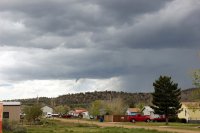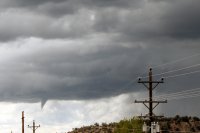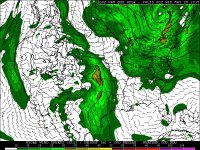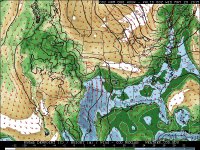JF Massicotte
EF3
Seems like Tuesday should be a chase day in the Panhandle region.
With 50 kts deep layer shear and the possibility of good instability (early convection could ruin this one) things sure look interesting.
While best low level shear appears to be North of the instability axis, if a storm can make it to the Eastern part of the Panhandle where stronger H8 winds are present, we could be in for some 'Panhandle Magic'.
I see two possible targets, the first one could be in the vicinity of the OK/NM/CO border where a small window might exist. I like the better winds @ 250mb over there and the position compared to the H5 jet streak seems more optimal. However, destabilization for this Northern target is questionable for now and choosing this target could be based on whether or not we accept marginal CAPE for more optimal dynamics.
Second target would be somewhere between Lubbock and Amarillo, from the NM border. Better instability but low level shear is marginal at best. May try to watch for some differential heating boundary from morning crapvection or for any storm moving NE into the 30kts 850 mb wind axis along highway 287 between Childress and Amarillo. Should storm initiate closer to the NM border where the GFS solution seems to place the dryline we could be in for a patience game.
With 50 kts deep layer shear and the possibility of good instability (early convection could ruin this one) things sure look interesting.
While best low level shear appears to be North of the instability axis, if a storm can make it to the Eastern part of the Panhandle where stronger H8 winds are present, we could be in for some 'Panhandle Magic'.
I see two possible targets, the first one could be in the vicinity of the OK/NM/CO border where a small window might exist. I like the better winds @ 250mb over there and the position compared to the H5 jet streak seems more optimal. However, destabilization for this Northern target is questionable for now and choosing this target could be based on whether or not we accept marginal CAPE for more optimal dynamics.
Second target would be somewhere between Lubbock and Amarillo, from the NM border. Better instability but low level shear is marginal at best. May try to watch for some differential heating boundary from morning crapvection or for any storm moving NE into the 30kts 850 mb wind axis along highway 287 between Childress and Amarillo. Should storm initiate closer to the NM border where the GFS solution seems to place the dryline we could be in for a patience game.




